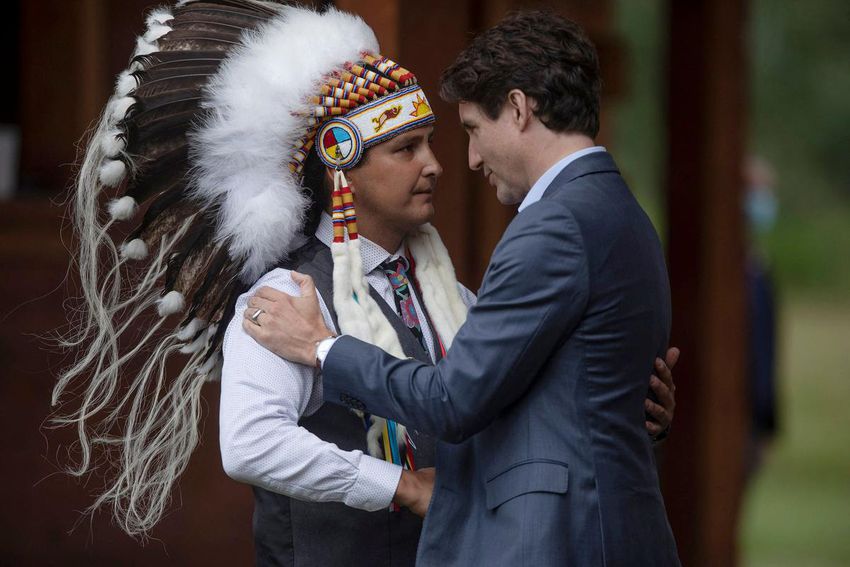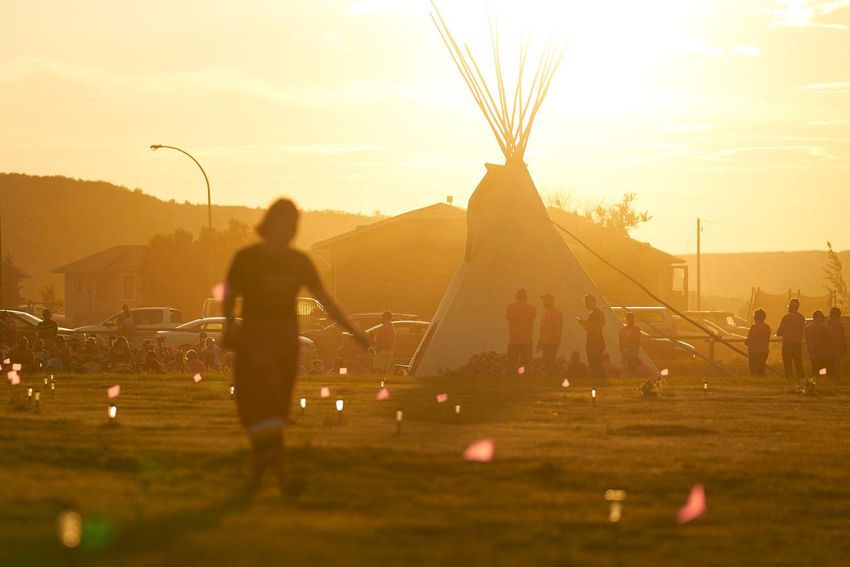Visitors have come from Alberta, British Columbia, and Manitoba. A group of motorcyclists crossed all the way from Edmonton. The grandmothers brought their own chairs so they could sit and stay for a while.
In the six months since Cowessess First Nation announced the discovery of 751 unmarked graves, the site has become an informal gathering place for community members and outsiders who come to pay their respects to people, many of them students. of an old residential school. buried in a field in the Qu’Appelle Valley of southeastern Saskatchewan, before their identities were lost in time.
But with the news of a landmark $ 40 billion federal settlement, which will compensate First Nations children and their families harmed by an underfunded child welfare system, Cowessess hopes to become an example of how communities can recover. the child welfare system.
“There are children in care and young adults today who have endured a system that was not created for their success,” says Chief Cadmus Delorme, who led the community through the discovery of the tomb.
“And for the compensation to be fair, for this country to recognize the grievances.”
But while half of the deal, to the tune of $ 20 billion, will pay compensation for the people, a second amount of money, also worth $ 20 billion, will be spent reforming the system over five years.
Reform is already underway at Cowessess, Delorme says. Last year, the community became the first First Nation in the country to strike a deal to regain control of its own child welfare system.
Delorme is hopeful that some of that funding will help continue to pay for the new child welfare program in her community, which is, in many ways, the first in the country.
Many First Nations leaders have drawn parallels between residential schools, which in many cases saw children separated from their parents and mistreated or even abused by their new teachers, and the child welfare system, which has seen thousands of indigenous children separated from their families. .
Before the tragic discovery, which remains the largest discovery of unidentified graves near a former residential school, the community had already begun the process of taking the child welfare system back into their own hands.
Many have argued that child welfare should be controlled by indigenous communities themselves. Last March, Cowessess residents ratified the Miyo Pimatisowin Law, which establishes the principles and components of its own program of services for children and families.
They were the first First Nation to ever set the rules for their own program, after Bill C-92, which became federal law in 2019, gave them that option for the first time. The new plan included managing case files, running treatment programs, and potentially bringing some children currently in care back home to the community.
The federal government had very little involvement in the Miyo Pimatisowin Act, and now Delorme says he hopes other nations can learn from his experience. Every nation is different and will have its own way of dealing with intergenerational trauma, but Cowessess has helped others figure out how to make their own laws and rules, he says.
“Cowessess is not only moving out of the provinces’ child welfare system, we are also creating our own court system to oversee appeals and make sure everything is fair.”
Last July, a $ 38 million funding and coordination agreement was finalized over two years when Prime Minister Justin Trudeau visited the Cowessess powwow grounds.
Cowessess began working at Chief Red Bear Children’s Lodge in April, and since then the leadership says 19 children who were in government care have been returned to the First Nation, where they are in the care of the supported family.
Nine children in care in Saskatchewan with roots in Cowessess have been introduced to the family and community.
In terms of the cost of creating a new program, Delorme likens it to launching a rocket – it takes a lot of fuel to lift off, but once you get to orbit, it doesn’t take as much, he says.
So while that first chunk of funding will help them get through the first two years, the leadership is already talking to the federal government and the province about the years after that, and is hopeful that some of the money announced Tuesday come into play.
The community has already heard from First Nations across the country, he says.
“Sometimes the fear of the unknown will make this not a good idea,” he says. “So we are very open to sharing the success.”
The settlement says First Nations children living on the reservation and in the Yukon who were removed from their homes between April 1, 1991 and March 31, 2022, will be compensated, along with their parents and caregivers.
Ottawa says this includes those affected by what it calls the government’s narrow definition of the Jordan Principle between December 12, 2007 and November 2, 2017, as well as children who were unable to access a service or product. essential public from April 1. 1991 to December 11, 2007.
The Jordan Principle is a measure that stipulates that jurisdictional disputes must not impede the provision of services to First Nations children.
In the past decade and a half, Canada has had to learn a few things about how to pay compensation to First Nations people harmed by historical grievances, Delorme notes.
In 2006, a multi-billion dollar settlement was announced for alumni who suffered abuse and trauma in residential schools. Then, in 2019, a federal court approved compensation for those who had attended day schools.
Those agreements made it clear that beneficiaries must be supported throughout the process, he says. In previous installments, having to answer questions or deal with a formal system was difficult for some alumni who were still dealing with trauma. In some cases, they felt discriminated against or avoided receiving the money, Delorme says.
“You have to understand that all people are being compensated because some kind of trauma happened in their life, and it is not an easy solution,” he says.
Cowessess is looking to create some kind of internal process to advocate for recipients and make sure they get the emotional support and responses they need.
“Some may just be very shy, others may come in with the mentality that the whole system is against them and that they will find themselves in a bad way and they will shut down,” says Delorme. “At the end of the day, we just want to make sure they receive legitimate compensation for what they endured in the system.”
It is not yet known how many people at Cowessess will be entitled to compensation, says Delorme. He says the community has started talking about how to support those who do get money.
The issue of child welfare is urgent for the youth community, where almost a third of the 4,300 citizens are under 19 years of age.
Work on the unidentified graves also continues, he adds. So far, researchers have named about 300 people, most of them students, who are believed to be buried in one of the nameless graves. He estimates that the work of identifying people and trying to match them to a specific grave is about a quarter done.
But Delorme says they’ve had to make sure their research team, which is split evenly between people from Cowessess and other nations, has had access to mental health supports as the work progresses.
“They go home and lay their heads on the pillow after reading hours and hours of records, and some of these records actually have some heartbreaking stories to go with them,” he says.
But the community itself has come out of the discovery strong and with the knowledge that it is capable of dealing with a tragic past.
“Externally, I think Canada knows that there is a First Nation in this country that approaches very uncomfortable conversations with professionalism and optimism, and that we are going to get through this together.”
Reference-www.thestar.com

